Man is born free, and everywhere he is in chains.
– Jean-Jacques Rousseau
The Bastille once stood in the heart of Paris — a hulking, heavily-fortified medieval fortress, which was used as a state prison. During the 18th century, it played a key role in enforcing the government censorship, and had become increasingly unpopular, symbolizing the oppressiveness and the costly inefficiency of the reigning monarchy and the ruling classes.
On 14 July 1789, the prison of Bastille was stormed by revolutionaries. It housed, at the time, only seven prisoners — including two “lunatics” and one “deviant” aristocrat — but the storming of the fortress was not just a tactical victory. Its fall at the hands of the Parisian militia and the city’s peasants was a symbolic and ideological victory for the revolutionary cause, and became the flashpoint for one of the most tumultuous periods of European history. With the fall of the Bastille, the French Revolution had begun, which would eventually culminate in the bloody toppling of a regime which had existed for nearly 800 years. This day is celebrated across France as Le quatorze juillet, the first milestone along the road to the French Republic. In English-speaking countries, it is called Bastille Day.
To mark Bastille Day, and the 225th anniversary of the French Revolution, we’ve made a selection of informative scholarly articles free to read on the Very Short Introductions online resource and University Press Scholarship Online. Want to find out about the French Revolution, how it began, what happened, and why it is perhaps one of the most pivotal events in modern European history? Then carry on reading.

The Storming of the Bastille by Jean-Pierre Houël (1735-1813). Bibliothèque nationale de France. Public domain via Wikimedia Commons.
Why did the French Revolution happen?
“Why it happened” in The French Revolution: A Very Short Introduction by William Doyle
The years of build up to the French Revolution were full of uncertainty and confusion. Why the Revolution happened was not because of a single event, but instead it was caused by a number of developments at the end of the 1780s. This chapter provides a brief overview of these events, taking a look at how important the financial problems were in causing the initial unrest and the significance of the role of the monarchy.
What happened at the Storming of the Bastille?
“‘Thought blew the Bastille apart’: The Fall of the Fortress and the Revolutionary Years, 1789-1815“ in The Place de la Bastille: The Story of a Quartier by Keith Reader
During the late 1780s, France was suffering under a crippling economic crisis, throwing the lavish expenditures of the ruling classes and the economic incompetence of the state into bass relief. The Bastille, incredibly costly to maintain and a symbol of state oppression, had become increasingly unpopular with the masses for this reason, among others. This chapter focuses on the events which culminated in the storming and eventual ruin of the fortress, and the ensuing revolutionary years.
How has the Déclaration des droits de l’homme et du citoyen been used throughout French history?
“Rights, Liberty, and Equality“ in Revolution and the Republic: A History of Political Thought in France since the Eighteenth Century by Jeremy Jennings
The Déclaration des droits de l’homme et du citoyen (The Deceleration of the Rights of Man and of the Citizen) was passed in August 1789 by France’s National Constituent Assembly. It was a cornerstone of the Revolution, and set out the rights of man as “liberty, property, security and resistance to oppression,” and is one of the most important documents in the history of human rights. Exploring the content of the Déclaration, this chapter goes on to examine how the language of rights it set out was used in key, formative moments in subsequent French history.
What were the Marquis de Sade’s politics during the French Revolution?
“Sade and the French Revolution” in The Marquis de Sade: A Very Short Introduction by John Phillips
Donatien Alphonse François de Sade, or the Marquis de Sade, was a French aristocrat, politician, and writer accused by many of political opportunism during the Revolution. He portrayed himself as both a feudal lord and the “liberator” of Bastille, when he called for revolution from his cell. He was a theatrical man with many opportunities to self-dramatize during the Revolution, making it difficult to clearly understand his political position. This chapter examines this through his thoughts and writings during the Revolution.
How was Marie-Antoinette represented?
“Pass as a Woman, Act like a Man: Marie-Antoinette as Tribade in the Pornography of the French Revolution“ in Homosexuality in Modern France ed. by Jeremy Merrick and Bryant T. Ragan
Marie-Antoinette, the ill-fated Austrian princess who married Louis XVI, and who met her fate under the guillotine in 1793 at the present-day Place de la Concorde, has long been a much-maligned figure of the Revolution — her name now synonymous with large wigs, “let them eat cake,” and cold indifference to the plight of the poor and disenfranchised. In this chapter, the pornographic pamphlets distributed about the Queen during the Revolution are analysed, paying particular attention to her supposed homosexuality and licentiousness, and the role this took in the anti-monarchist propaganda of the period.
What literature was inspired by the Revolution?
“Around the Revolution” in French Literature: A Very Short Introduction by John D. Lyons
Throughout the 1700s many in France grew more and more sceptical: about the absolute nature of the monarchy and around the idea that authority was established by divine providence. This chapter looks at how the literature of the time was inspired by and reflected this dissatisfaction, including Pierre Caron de Beaumarchais’s The Marriage of Figaro and The Marquis de Sade’s Justine ou les Malheurs de la Vertu.
What was the Terror?
“Off with their Heads: Death and the Terror“ in The Terror of Natural Right: Republicanism, the Cult of Nature, and the French Revolution by Dan Edelstein
The guillotine has come to embody the darker side of the French Revolution, especially during the Reign of Terror which lasted from September 1793 to July 1794. The death toll of The Terror is almost incomprehensible, with 16,500 victims meeting their ends under the guillotine. Maximilien Robespierre is the figure most closely associated with this bloody period, and yet, “in one of the more bitter ironies of history” as this chapter says, he started his career as an outspoken opponent of the death penalty. Here, the genesis of The Terror is detailed, the differences between the French and American Revolutions set out, and the concept of the hostis humani generis (enemy of humanity) introduced — an enemy who could only be met with death.
How did the French Revolution change France?
“The French Revolution, politics, and the modern nation” in Modern France: A Very Short Introduction by Vanessa R. Schwartz
The French Revolution, unlike others, managed to effect change from within, with the new government making some radical changes, even starting a new calendar, to differentiate themselves from the old regime. This chapter looks at how history and symbols were used by this new government to symbolize and mythologize their nation.
University Press Scholarship Online (UPSO) brings together the best scholarly publishing from around the world. Aggregating monograph content from leading university presses, UPSO offers an unparalleled research tool, making disparately published scholarship easily accessible, highly discoverable, and fully cross-searchable via a single online platform. Research that previously would have required a user to jump between a variety of books and disconnected websites can now be concentrated through the UPSO search engine.
The Very Short Introductions (VSI) series combines a small format with authoritative analysis and big ideas for hundreds of topic areas. Written by our expert authors, these books can change the way you think about the things that interest you and are the perfect introduction to subjects you previously knew nothing about. Grow your knowledge with OUPblog and the VSI series every Friday, subscribe to Very Short Introductions articles on the OUPblog via email or RSS, and like Very Short Introductions on Facebook.
Subscribe to the OUPblog via email or RSS.
Subscribe to only history articles on the OUPblog via email or RSS.
The post A reading list on the French Revolution for Bastille Day appeared first on OUPblog.

I got two awards. In one day!
I wonder why that is?
So first off, the Sunflower award.
These are the rules. Since I am a rebel, I will do everything except nominate eleven other bloggers, 'cause all the eleven I'd nominate probably already received this anyway.
Rule the First: Share eleven facts about yourself.
Rule the Second: Answer the questions set by your nomination blogger.
Rule the Third: Nominate eleven bloggers.
Rule the Fourth: Set questions for the nominated bloggers.
SOOOOOO.... First off, here are Eleven Facts About Me.
1.) With my medical transcription training, I tend to double-space between periods now, in everything except novels I'm writing, 'cause for the most part Editors/Agents/Publishers don't like double-spacing.
2.) I love watching music videos.
3.) I have a hard time doing new things.
4.) I usually run out of things to share around Number Four.
5.) I get depressed with popular young adult fiction and go back to my staple diet of Diana Wynne Jones, Patricia McKillip, and Tolkien's Farmer Giles of Ham and Smith of Wootton Major.
6.) I have taken to saying "Jeepers" a lot. Not sure where that came from.
7.) I don't even know how many books I own. I think there were a hundred on one bookshelf in my bedroom, and there's got to be five? six? maybe even ten times that amount in the closet... and on other bookshelves... and under the bed... and in other sisters' rooms.
8.) I find it amazing how many TV shows Mark Sheppard has played in.
9.) I was tempted to skip number 9 and see how many of you were devoted enough to read through all these "facts" in order to catch the missing number. I resisted. Aren't you proud?
10.) Right now, one of my most favourite songs to listen to is POMPEII by BASTILLE.
11.) I want Josh Groban to do another Kid Snippets video NOW!
Now for the questions from Amanda and Bella.
AMANDA'S QUESTIONS ~
1.) What's your favorite type of dog?I freakin' LOVE German Shepherds! But, if we're talking smaller dogs, I'm into Border Collie/Cocker Spaniel mixes, and Shiba Inus.2.) Do you sing along to Doctor Who's theme song?TOTALLY!! 3.) What does Tahiti make you think of?This:
4.) How did Moriarty fake his death?'Nough said. 5.) Who's your favorite Superhero.Iron Man. 6.) If you could choose a superhero name, what would you call yourself?
Hmmm.... I'd probably end up sticking with Cat. Ooh, I know. Panther. Cat Panther. That's my superhero name.
7.) You can travel back in your timeline, and only your timeline. What would you re-visit?
March 27th, 2007, August 24, 2011, and October 6, 2013... because those were the times we saw Josh Groban in CONCERT. And end of April to beginning of May 2013, 'cause that's when we went to Scotland. And every single Christmas Eve and Christmas in the history of my life.
There's Amanda's questions answered. Exciting, wasn't it?
BELLA'S QUESTIONS ~
1) Do you like Daylight Savings Time?I like when Daylight Savings Time ENDS, and we gain an hour. Otherwise I'm like: 2) What is one really good series which you have just discovered?Book series? Um, how recently? I'd say The 100 Cupboards was good, though technically that's a trilogy and not really a series. 3) Are you a subtle fan-girl or more of a loud excited fangirl like me?I believe I am subtle.4) Hamburgers or Hot dogs?Definitely hamburgers. 5) Do you like wearing sweaters or do you prefer hoodies?I'm more of a sweater person. I'm not crazy about hoodies on myself, because I feel totally gangsta in them. However, I like hoodies on other people.6) Do you like going out in the evening?
7) Did you ever play Truth or Dare and did you like it?You mean Interrogation or Humiliation? *See question six's gif for your answer.* And that's the Sunflower Award! Thanks again to Amanda and Bella for the nomination!
I nominate:
AllynNessieJohn the HedgehogMy questions for youse all:1.) Do you prefer Arabic or Roman numerals?2.) Do you watch My Little Ponies?3.) What's the absolute stupidest thing you've ever done?4.) What's your idea of the best car?5.) What's the worst thing you can imagine?6.) Do you know what gif stands for?7.) Be honest... did you have to Google "gif" in order to answer question 6 intelligently?Have fun! :) And Now...
Drumroll, please...
I also received the Liebster Award from Rose M. Acknowledge the blog that nominated you. Thank you, Rose from
The Golden Road!
Dos: Answer the 11 questions the nominating blogger created.
Tres: List 11 bloggers with less than 200 followers that deserve some recognition.
Quatro: Post 11 questions for them to answer.
Cinco: Notify them that they've been nominated.
Alrighty! ROSE'S QUESTIONS ~1.) An anonymous someone drops a note on your front porch saying that they will fund a trip to either England, an African Safari, Prince Edward Island, or Italy. Which do you choose? Why?
Italy. Why? Because it's freakin' ITALY!
2.) You're being forced to re-do your room. What color do you paint it?
THIS:
3.) Do you have a particular song that you listen to often, but it never seems to get old? If so, what is it?
Yes. Yes I do.
4.) Would you rather be lounging in the sun on the beach reading a good book or adventuring in the waves?
Ooh, choices, choices... I'd do both. Read a little in the sun, and go for a swim, and read a little in the sun, and go for a swim, and read a little in the sun, and... you get the picture, right?
5.) You suddenly end up with two twin kittens. One is a girl; one is a boy. What do you name them?
Sam and Jess.
6.) You're organizing a get together with friends. Would you choose a picnic or a movie night?
Definitely a movie night. Less small talk. LOL
7.) What is your pet peeve?
BADLY WRITTEN YA AND MG NOVELS!!!
8.) Is there a new hobby you've been wanting to try out?
I fancy archery.
9.) If you could pick one instrument that you would (without any effort on your part) instantly master, which would you choose?
Pan pipes.
10.) Would you like to be snowed inside for a week?
*See John Watson gif used in Bella's question number 6.*
11.) Pick the closest book to you that you've read. Who is your favorite character in the book?
Right now, the book closest to me that I've read is The Unexpected Mrs. Pollifax, and my favourite character in that book is John Sebastian Farrell.
I DID IT, Y'ALL!!
And now I nominate:
My questions for YOUSE all:
1.) What fandom do you "belong" to?
2.) Would you fight to the death someone who bashes one of your favourite characters?
3.) Would you use daggers for subtlety, or swords for an all-out "COME AT ME, BRO!" battle?
4.) What do you do when someone tells you that you have pepper in your teeth?
5.) To you, what's more awesome... climbing trees, or writing stories?
6.) Have you ever secretly wished you were a unicorn?
7.) When you drink tea, do you prefer a mug or a bone china cup?
8.) What's your opinion on Alka-Seltzer?
9.) If you are an Agents of SHIELD fan, or a Marvel fan, or just a superhero fan, which agent/superhero do you think you'd be?
10.) Do you have a lucky number?
11.) WHY do you have a lucky number?! (Those of you who replied No to question 10, Why DON'T you have a lucky number?!!
And that's that.
Hope you all had fun with that, and we'll see you next time!
God bless!
Cat

While getting ready for my surgery, I started accumulating books over the past few months, some from used book stores and some from Borders. (Alas, I won't be doing the latter anymore.) Some were adult books, and some were children's books. I started on the adult stack first, and was I ever surprised: Apparently my week in Paris a couple of summers ago burned its imprint into my unconscious; five of the books take place either partially or entirely in Paris. They are too many to review, so consider this post a thumbnail sharing of each.
I'll start with my least favorite first,
Gourmet Rhapsody, by Muriel Barbery. I'm sorry to put it that way, too, because my purchase was motivated by how charmed I had been by Barbery's first book,
The Elegance of the Hedgehog. In
Hedgehog, a young girl has given herself a date on which she'll commit suicide unless she can find enough reasons not to. I know that sounds like a morbid story, but the book captures small, luminous moments of beauty that make life truly worth living. So I was expecting to be deeply moved again in
Gourmet. Nope: A food critic lies on his deathbed, hoping to capture a favorite flavor that he can't quite identify in memory. Acquaintances and family each have a turn at sharing what they recall about this thoroughly unlikeable man. That's it, folks. some exquisite writing, because this author cannot turn out a bad line, but for me, the plot was . . . missing in action (pun intended).
But, next I read Cara Black's
Murder in the Bastille. Black is one of my favorite mystery writers. Her series stars Aimée Leduc, a private eye for white collar techie matters who keeps getting dragged into murder cases instead. To read any one in the series is to get a free trip to Paris. Black knows that city inside and out and places each new mystery in a different neighborhood. Because Aimée grew up in Paris, naturally she has little snippets of memory about buildings she passes or bridges or streets she traverses, and so in a completely non-intrusive way, the reader picks up scraps of French history and art history while Aimée chases or runs from the bad guys. Black's website is equally interesting: Press
here and go take a peek.
Then I read
The Girl at the Lion d'Or by Sebastian Faulks. This is a carefully sculpted story of a young girl cast adrift following World War I. It takes place in a small village outside of Paris where Anne has taken employment as a waitress in the Hotel Lion D'Or of the title. Her story unfolds by degrees: Her father was falsely accused of cowardice at Verdun and shot. Because of accusations, Anne and her mother were hounded out of their village and went to Paris. With no one to turn to after her mother dies, Anne hopes to find a new life at the Lion D'Or. Sh






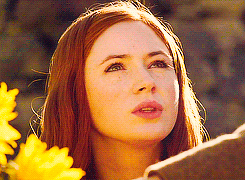





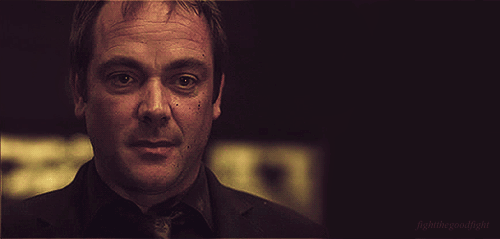




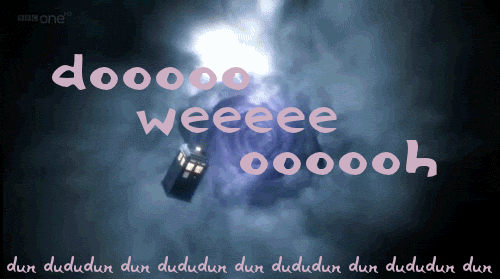






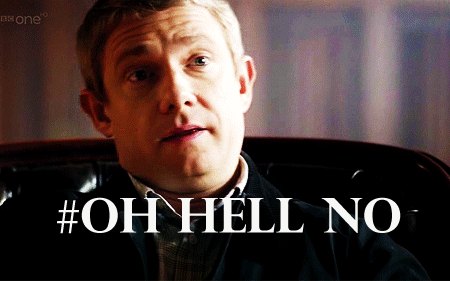





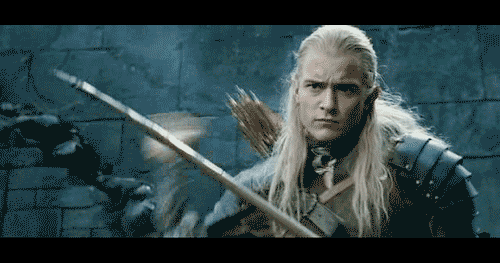


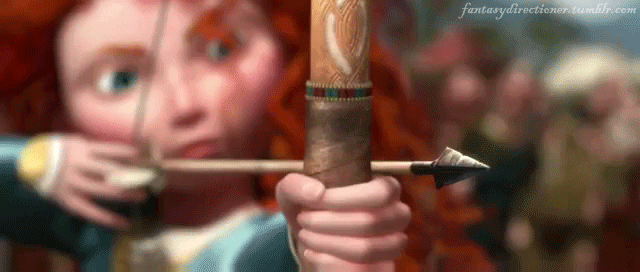




I didn't know about the Cara Black series, so I've added it to my TBR list and looked it up at my library. I look forward to reading the first, Murder in the Marais!
I also read the Club Dumas. I agree with your assessment. I enjoyed it, but a bit weird, and fun. And I, too, love to read (and write) about Paris!
Thanks for sharing your Paris-themed books!
Oh, my. More books on my TBR list. I hardly have time for my TBW list! But I remind myself that reading is part of the job of writing, so that makes it okay. Thanks. I put a couple of these on my list that sound good to me.
I love how your blog makes me feel as if I've been on vacation without having to pack a suitcase or clean out the refrigerator first. :)
Thanks for these interesting reviews; I was especially intrigued to read about Dumas' 3 Musketeer novel, to hear it's good. I've never read it, just watched the movie. Same with The Count of Monte Cristo by Dumas, which is a fabulous movie...so I'm wondering how the book compares!
Vicki, I have three of the series and want to get more. Each case is so different, and I like it that you learn so much in her mysteries simply by the nature of the mystery, without it ever being tedious. They are all page turners.
Rosi, glad you found sow new books to go in your TBR stack.
Michelle, if you think my blog makes you feel like you've been on vacation, Cara Black is a must read, any one of her books.
Carol, I saw The Count of Monte Cristo, too, but have never read it. Now I want to. The Three Musketeers was one of Dumas's early books. And you know how writers improve with each new book . . .
My hubs liked the Club Dumas and is big fan of the Three Musketeers. Sadly I have read neither!
Like Lydia, my hubby also loved THE CLUB DUMAS. Guess I will have to read it. :)
I haven't heard of these books. Thanks for the info.
I visited Paris for two short periods. (Both total about a week). I fell in love with the city and now love to read books with Paris as the setting.
Lydia and Alleged, it's nice to find yourbhubbies read and liked The Dumas Club. It's so . . . I don't know, esoteric? I bought it for the books-and-Paris angle, but i did wonder how good it would be, if someone had discarded it. have a hard time parting with books I like, which is why our house looks like a used books store.
Theresa, like you, I've been to Paris twice -- once for 5 days, and one for 8. But it only took me about 5 minutes to fall in love with the city.
I read The Club Dumas a couple of years ago. It disturbed me; I don't like the idea of people making packs with the devil, even though I do not believe in the devil.
Yeah, I agree with you there, Richard. But there are some crazies who do that. The guy who did in the book surely was crazy. Could you figure out, though, who the blode girl was supposed to be? I could never make up my mind.
I don't remember enough about the book or the girl to give an opinion.